Suchergebnisse für "Factsheet: Energietechnologien gestalten, die für alle sinnvoll und nutzbar sind"
Digital technologies
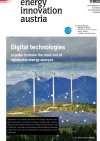
Digital technologies in order to make the most out of renewable energy sources.
energy innovation austria
1/2022
Herausgeber: BMK in cooperation with the Climate and Energy Fund
Englisch, 12 Seiten
Downloads zur Publikation
Renewable Heating and Cooling
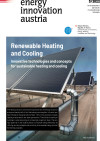
Innovative technologies and concepts for sustainable heating and cooling
energy innovation austria
3/2022
Herausgeber: BMK in cooperation with the Climate and Energy Fund
Englisch, 12 Seiten
Downloads zur Publikation
Nachhaltig Thermisch Kühlen
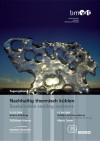
Herausgeber: BMVIT
Deutsch, 118 Seiten
Downloads zur Publikation
Indicators for urban areas – for construction, operation and mobility in climate-friendly areas
Development and coordination of indicators for energy and ecological evaluations of urban areas based on the Swiss 2000-Watt certification system. The results will be used for the development of a quality assurance system for urban areas similar to the klimaaktiv declaration for buildings and the e5 certification for communities.
Presentation of the effective use of innovative bioenergy technologies in the Austrian energy system of the future (BioEff)
The study shows possibilities and strategies for the effective use of innovative bioenergy technologies in Austria.
IEA Bioenergy Task "GHG Balances"
Participation in the investigation net of the IEA Bioenergy to greenhouse gas balance of biomass and bioenergetics systems as well as coordination of the Austrian participation in IEA Bioenergy.
VERTICALurbanFACTORY
The project researches possibilities and potentials of highly efficient use of space through modern concepts of "stacked" functions and vertical production.
IEA EBC Annex 66: Newsletter No. 3 March 2016

Herausgeber: IEA EBC Annex 66
Englisch, 14 Seiten
Downloads zur Publikation
IEA EBC Annex 66: Newsletter No. 2 July 2015

Herausgeber: IEA EBC Annex 66
Englisch, 11 Seiten
Downloads zur Publikation
IEA EBC Annex 66: Newsletter No. 1 October 2014

Herausgeber: IEA EBC Annex 66
Englisch, 9 Seiten
Downloads zur Publikation
ZERMET - Zero Emission Retrofitting For Existing Textile Plants
Minimisation of the consumption of water, chemicals and energy in the textile industry. Further development of the ZERMEG approach in the form of a questionnaire and application in the textile industry.
Ecodesign

Initiatives and measures for the promotion of an environmentally sound product design
Forschungsforum
2/1995
Herausgeber: BMVIT
Englisch, 6 Seiten
Smart Metering consumption
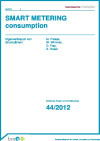
Eigenverbrauch von Stromzählern
Schriftenreihe
44/2012
M. Preisel et al.
Herausgeber: BMVIT
Deutsch, 110 Seiten
Downloads zur Publikation
IEA Solar Heating & Cooling Programme
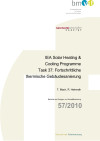
Task 37: Fortschrittliche thermische Gebäudesanierung
Schriftenreihe
57/2010
T. Mach, R. Heimrath
Herausgeber: BMVIT
Deutsch, 162 Seiten
Downloads zur Publikation
Biotope City - construction manual for the green city of the future
"Biotope City" is an overall concept for the implementation of comprehensive urban greening with the aim of using the regenerative mechanisms of nature. With this approach, quality of life is to be comprehensively, sustainably and cost-effectively increased and resilience against extreme weather events in cities will be improved. The project aims to generate realistic components of a "construction manual" for the green city of the future, which are generalizable and transferable.
City Cooling - Intelligent district cooling implementation, Vienna
Development of an intelligent district cooling concept and alternative solutions for heat rejection from central absorption chillers at the example of the neighbourhood TownTown in Vienna.
Polymeric Materials for Solar Thermal Applications (October 2009)

IEA SHC Newsletter Task 39
Englisch
Formulation developement fo a repellant against "game bite" to be used for forestry and vineyards
A repellent against deers containing sheep fat in different formulations for usage in forestry and vineyards should be developed with special attention to get a stabilized formulation with high quality. Efficacy and stability will be tested.
Energy storage systems
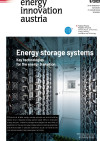
Key technologies for the energy transition
energy innovation austria
5/2021
Herausgeber: BMK in cooperation with the Climate and Energy Fund
Englisch, 16 Seiten
